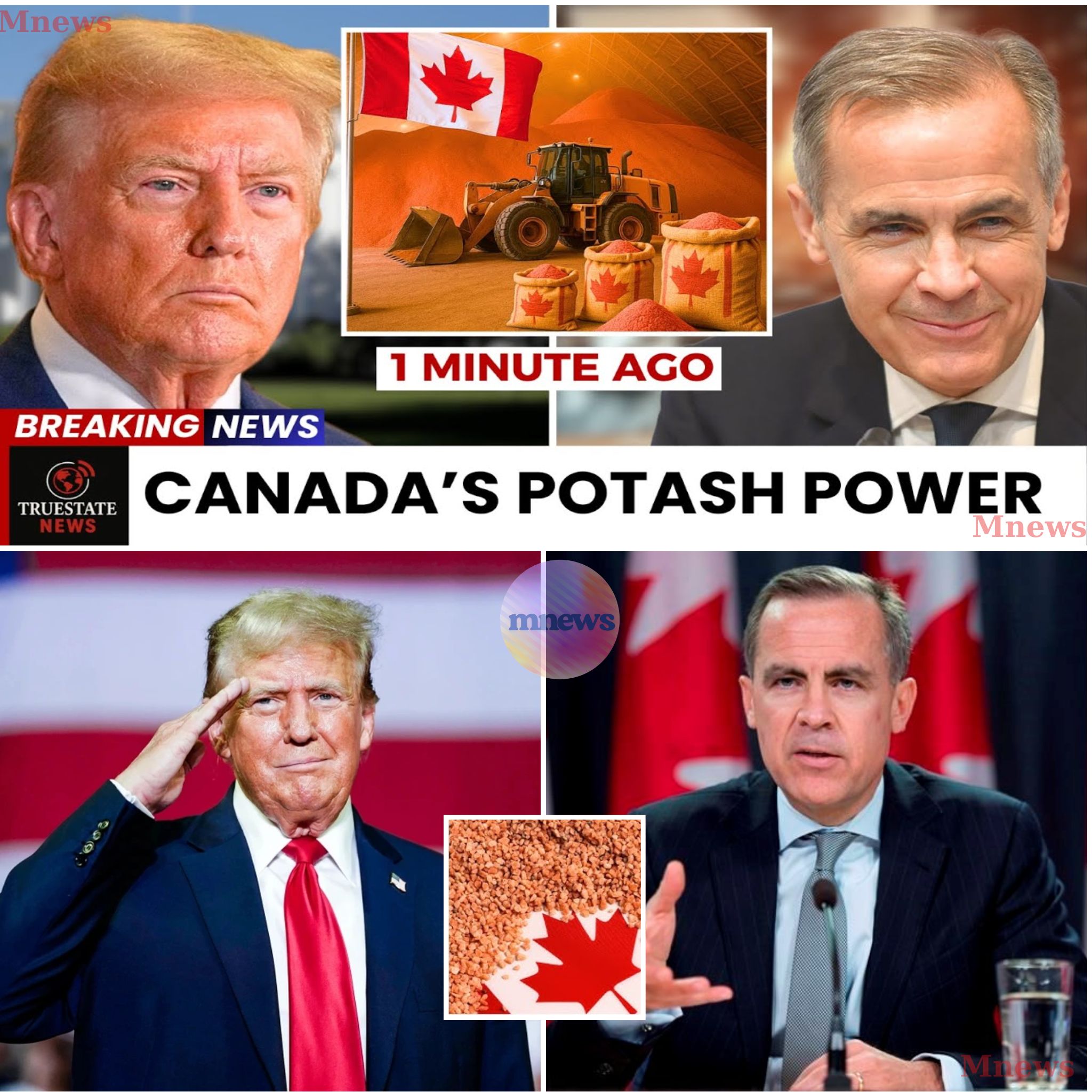 Canada’s Potash Power THREATENS US Agriculture – Here’s How Trump’s Tariffs Put US Farmers at Risk
Canada’s Potash Power THREATENS US Agriculture – Here’s How Trump’s Tariffs Put US Farmers at Risk
In an escalating trade war, the United States finds itself perilously dependent on Canadian potash—an essential fertilizer that underpins American agriculture. Nearly 90% of U.S. potash imports come from Canada, primarily from the province of Saskatchewan, making this mineral a critical lifeline for American farmers. As tariffs imposed by the Trump administration create a ripple effect across the agricultural sector, the implications for U.S. farmers are dire.

With tariffs impacting both sides of the border, American farmers are facing soaring costs for potash, a mineral crucial for crop vitality. The stakes are high; without it, yields of vital crops like corn, soybeans, and wheat could plummet by 5% to 30%, translating into losses of $6 billion to $17 billion in farm revenue. The fragility of this supply chain raises a haunting question: What if Canada decided to halt potash shipments altogether? Such a scenario, while hypothetical, underscores the precarious balance of power in this trade conflict.
The reality is that U.S. agriculture has already suffered from the fallout of tariffs, with rising costs for equipment and fertilizer compounding the challenges faced by farmers. As major markets like China pivot to Brazil for agricultural imports, American farmers are left grappling with diminished sales and increasing debt, further straining rural communities. In this environment, potash is not merely an agricultural input; it is the lifeblood of food production
.
Canada’s unique position in the global potash market complicates the trade landscape. With over 40% of global potash exports originating from Canada, the U.S. is ill-equipped to replace this vital input domestically, as building new mines would take over a decade and require billions in investment. The current supply chain is fixed, and Canada holds significant leverage over U.S. farmers, who depend on its potash to sustain production.

The ramifications of a potential cutoff of Canadian potash would be immediate and severe. Farmers would face critical shortages, leading to skyrocketing food prices and increased pressure on Washington to address the crisis. In a twist of irony, tariffs intended to penalize Canada could backfire, imposing inflationary pressures on American households and igniting political discontent.
The situation mirrors the broader impacts of Trump’s tariffs on other imports, such as copper. The 50% tariff on copper products has not only driven up domestic prices but also led to a surge in copper thefts, costing local governments millions in repairs. These tariffs, framed as a move to bolster national security, instead reveal vulnerabilities in the U.S. economy, with American consumers bearing the brunt of increased costs.

Meanwhile, Canada has adeptly navigated the turbulent waters of U.S.-Canada trade relations. While the Trump administration employs a strategy of short-term pressure through tariffs, Canada is making strategic investments in energy and technology, positioning itself as both a resource power and a digital leader. By diversifying its trade relationships beyond the U.S., Canada is laying the groundwork for a more resilient economy.
As the trade talks continue, Canadian officials are actively pursuing partnerships with Europe and Asia, signaling a shift away from reliance on the U.S. market. By focusing on long-term investments in infrastructure and innovation, Canada is crafting a future that will not be dictated by tariffs but shaped by sustainable economic growth.
In conclusion, the precarious situation surrounding U.S. dependence on Canadian potash highlights the vulnerabilities embedded within the current trade landscape. As tariffs escalate and trade tensions mount, the consequences for American farmers and consumers could be profound. Canada, while smaller in size, wields significant power in this trade war, and the outcome will ultimately hinge on how both nations navigate these turbulent waters. The stakes are high, and the clock is ticking for U.S. agriculture.




